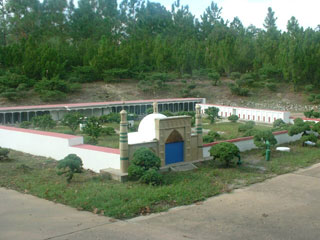 |
Id Kah MosqueFlorida Splendid China Exhibit #30
Located in Kashgar, Date Building Started: prior to 700 AD 700 AD: Zulpia, an Uighur, started restoration of existing structure |
 |
Id Kah MosqueFlorida Splendid China Exhibit #30
Located in Kashgar, Date Building Started: prior to 700 AD 700 AD: Zulpia, an Uighur, started restoration of existing structure |
Other exhibits from Xinjiang (Eastern Turkestan):Tomb of Apak Hoja